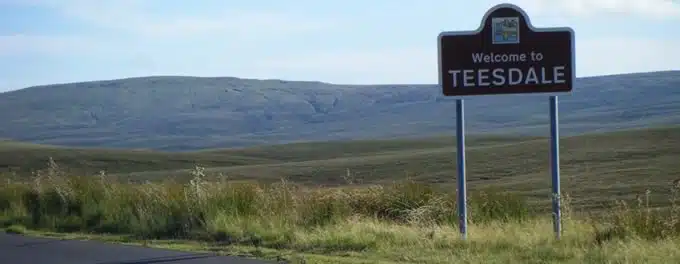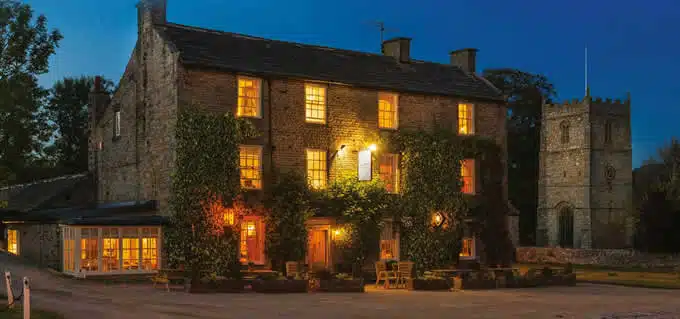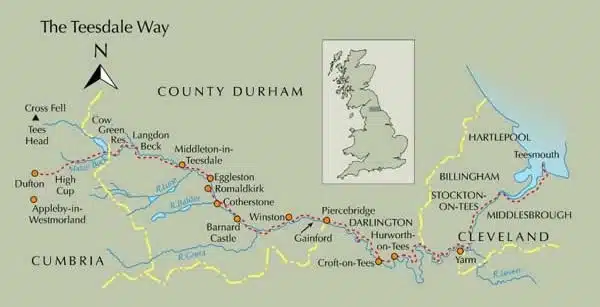History of Teesdale
Teesdale describes the area that surrounds the upper reaches of the River Tees, from its source in the hills to just west of the railway town of Darlington, County Durham where the river broadens out into the Tees Valley.
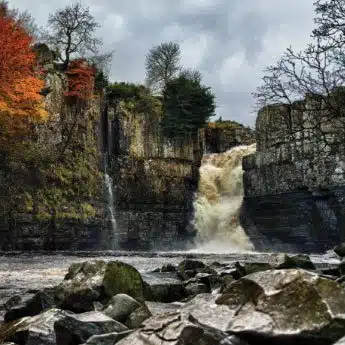
It is often described as the northernmost of the Yorkshire Dales. In fact the centre of the River Tees used to mark the border between Yorkshire and Durham and the ‘County bridge’ as it is still known over the River Tees in Barnard Castle had a wedding chapel (like Gretna Green in the Borders).
More than half of the land in Teesdale is privately owned. The Raby (Lord Barnard) and Strathmore estates (The Earl of Strathmore) are the largest – and the two families are linked to the dale’s main visitor attractions – The Bowes Museum and Raby Castle.
Farms belonging to Lord Barnard are easy to spot – they are all whitewashed. Tradition has it that this is so that Lord Barnard may easily recognise those properties where he might expect hospitality. The Strathmores (Bowes-Lyon) are related to the Royal Family. John Bowes (son of the 10th Earl of Strathmore) founded The Bowes Museum.
Teesdale has two towns – Barnard Castle and Middleton in Teesdale.
Barnard Castle, known locally as ‘Barney’, takes its name from the Norman stronghold around which it was built. It is a maze of cobbled streets and winding lanes with elegant Georgian and Victorian architecture.
Middleton-in-Teesdale dates largely from the 1850s when it was created as a ‘company town’ to support the lead mining industry in upper Teesdale. It is the gateway to the stunning scenery of the upper dale.
Teesdale Gardens
They say that the Englishman’s home is his castle, but we also take our gardens seriously.
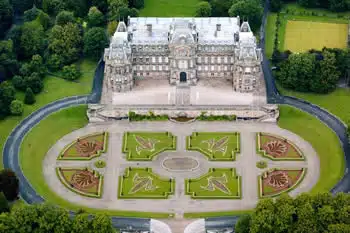
In the 19th century tourists flocked to see Rokeby Park which was designed to provide the essential qualities of the Picturesque – combining wild dramatic scenery with radiating vistas of the house and terraced walks by the river. Sir Walter Scott used it as a setting for a ballad.
At Raby Castle the medieval deer park was landscaped in the 18th century to provide a sheltered walled garden, terrace and unusual trees. Garden designers Thomas Wright, Thomas White and Joseph Spence worked on the project.
More recently Barnard Castle Rotary Club created an accessible garden in the grounds of Barnard Castle.
And don’t miss the informal gardens and nursery within the old walled gardens of Eggleston Hall.
Shopping and Markets
Teesdale is a world away from city high streets. It is a great place to potter for souvenirs, work by local artists and fresh local produce. Family-run businesses offer a personal service.
Farm shops such as Thorpe Farm Peel House offer a range of local and exotic produce to suit all tastes.
And if you can’t resist a visit to the high street stores Teesdale is within easy reach of the bigger centres of Darlington (30 minutes), Durham (45 minutes), Newcastle/Gateshead and the Metro Centre (70 minutes) and York (90 minutes).
Fine Food
Enjoy the nation’s favourite pastime in Teesdale. Traditional taverns and historic shophouses offer a perfect setting to relax and enjoy locally produced food.
Voted England Pub of the Year by the AA, The Rose & Crown Hotel is idyllically situated in Romaldkirk, next to the church from which the village takes its name.
Oliver Cromwell is reputed to have stayed at Blagraves House the oldest building in Barnard Castle, now an excellent restaurant.
The author Charles Dickens also stayed in Teesdale. You will find a mural depicting characters from his novels in the Morritt Arms Hotel.
Eggleston Hall Gardens offers a wonderful afternoon tea – and you can arrange to dine in the evenings on dishes prepared using the finest local ingredients and organic vegetables.
Raby Castle and The Bowes Museum offer beautiful backdrops to eat alfresco and on summer evenings you can often combine a picnic with a theatrical performance. And remember to take tea in the Market Place Teashop – silver teapots, cream cakes and homemade scones.
Things to do in Teesdale

The National Byway and C2C cycle routes take advantage of quiet country lanes. Hamsterley Forest offers different grades of route for mountain bikes. The River Tees is ideal for canoeing and Selset Reservoir offers opportunities for sailing and windsurfing.
There are several riding schools offering cross-country hacks and picnic rides.
Teesdale is also planning the world’s longest pedestrian rope suspension bridge across the River Tees. Abseiling, rock climbing, orienteering, team challenge, caving, gorge walking, raft building, ropes and balance course, archery and air rifle shooting, expeditions and bivis are available via the Kingsway Adventure Centre in Upper Teesdale.
Teesdale Leisure Centre
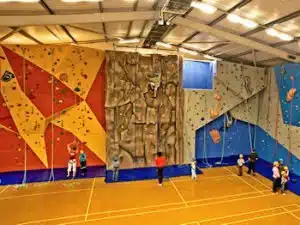
For further information telephone +44 (0) 1833 696 366 or fax +44 (0) 1833 695 034.
Teesdale has both public and private golf courses. There are tennis courts and a bowling green in the park at The Bowes Museum.
Teesdale Mercury
The Teesdale Mercury is England’s last remaining independent newspaper.

